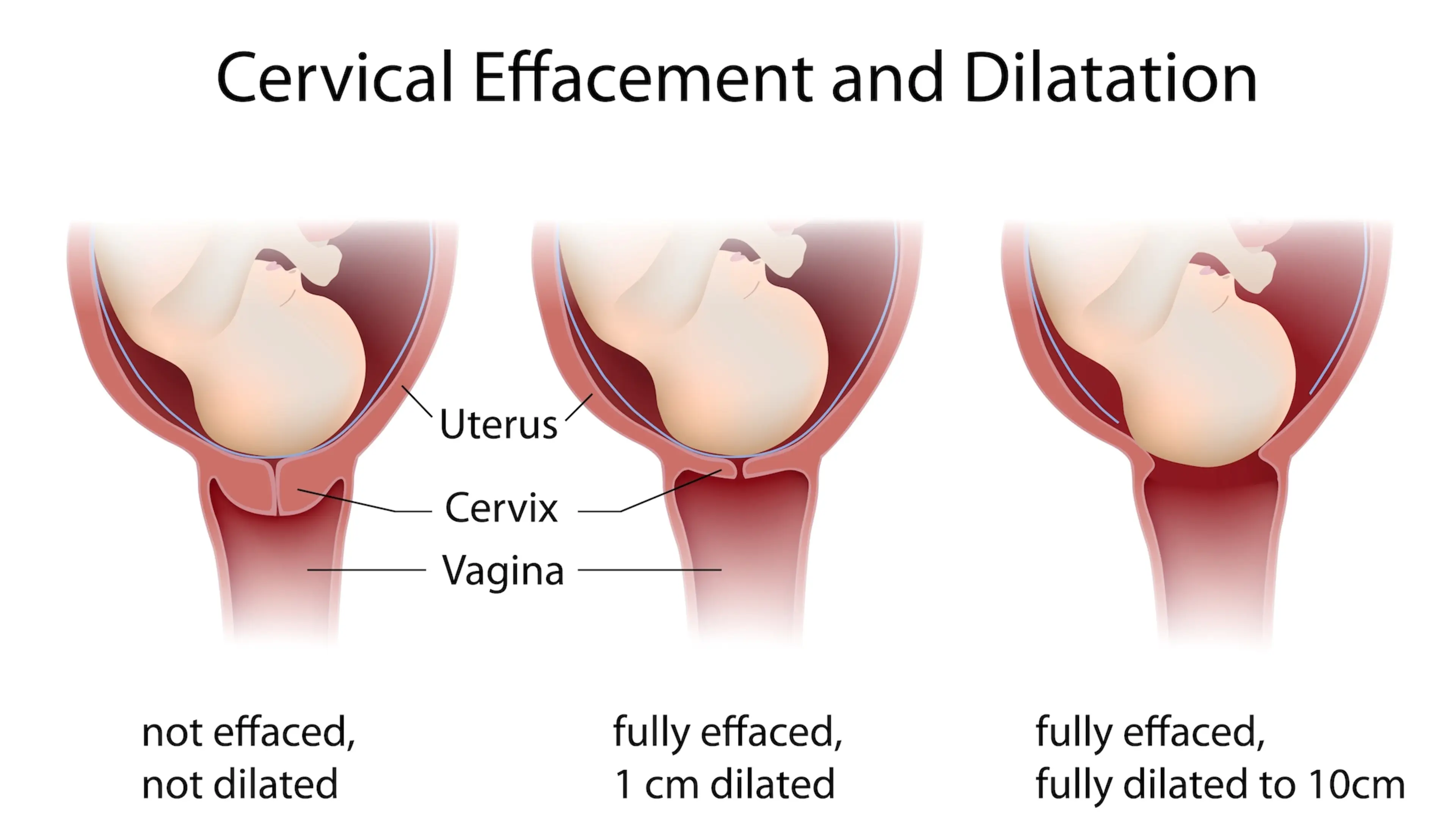Some important changes to your cervix need to happen before your baby can make its way down the birth canal: dilation and effacement.
You might know what dilation is—it’s the widening or opening of the cervix so baby’s head (and shoulders and body) can slide right through. But here’s what you need to know about effacement.
What is Effacement?
The Mayo Clinic defines effacement as 1 the process of the cervix thinning out and stretching to prep for birth. As you may know from childbirth class, the cervix is the gateway between the uterus and the vagina. It needs to soften, then thin (efface) and dilate (open), to allow the baby to enter the birth canal. The whole process is called cervical ripening.
Some pregnant people may wonder if the signs of cervical ripening mean that labor is imminent, but you shouldn’t necessarily rush to pack that hospital bag. Dr. Carla Williams , a New York ob-gyn, emphasized that labor can be a gradual process. “It’s important for pregnant people to know that things can take a while,” Dr. Williams says. “These are signs that are all good, and part of the normal process, but it doesn’t mean that the person will be in actual labor.”
What’s the difference between effacement and dilation?
Effacement: Think of effacement as the cervix getting shorter and thinner. It starts out about three or four centimeters long. As your baby’s head pushes down on the cervix, it’ll begin to efface, getting shorter and thinning out. If your ob-gyn or midwife is tracking it, they will tell you how effaced you are in percentages. So if you’re 50% effaced, that means it’s thinned halfway, and by the time you’re 100% effaced, your cervix will be paper-thin.
Dilation: Dilation is the process of the cervix opening up to let the baby’s head pass through. When we talk about dilation, we’re talking about diameter, measured in centimeters. Your cervix will go from completely closed (0 centimeters) to about 3 centimeters, which is about when active labor starts. Then, you’ve got to get to that magic number: 10. Once you hit 10 centimeters, you’ll be fully dilated and ready to party (i.e. push the baby out).
Cervical Effacement Symptoms
First-time moms often want to know: can you feel dilation or effacement as it’s happening? Probably not, but you might notice a few signs your cervix is ripening.
Cervical effacement symptoms can include:
Pelvic discomfort: Some people swear they feel little twinges or sensations down there as their cervix is changing. Once your baby’s head descends into your pelvis, you may feel that head pushing down on the cervix, which helps cause effacement and can be more than a little uncomfortable.
Contractions: You may have Braxton Hicks contractions, and later, labor contractions, both of which are thought to help bring on dilation and effacement.
Mucus plug: Losing the glob of mucus that’s been sealing off the cervix might come as a bit of a shock. (What is that goo in my undies?!) But it’s totally normal, and a definite sign the cervix is changing.
Bloody show: Cervical changes can also cause some capillaries around the cervix to rupture and cause a bit of spotting or streaks of blood, known as the bloody show—either arriving with the mucus plug or separately.
Symptoms can vary, but there are some undeniable signs of labor. “The body naturally prepares us for labor in a lot of ways, but sure-tell signs of labor include contractions that last for longer than an hour, bloody show, and the water breaking,” says birth and postpartum doula Emilie Rodriguez 2 . “Pelvic discomfort can just mean that things are happening; your mucus plug could grow back—it’s a good sign, but it doesn’t mean that labor is starting.”
How do you check cervix dilation and effacement?
Your doctor will likely check for you at your appointments as you near your due date. Wearing a sterile glove, they’ll insert fingers into the vagina and feel the cervix to gauge dilation and effacement.
It is possible to check your own cervix 3 for dilation and effacement, though it might be tricky to reach if you’re not in labor yet, and some women just don’t feel comfortable doing it. “Unless you’re a medical professional who regularly does cervical exams, I can’t say I’d recommend it, especially if your water has broken,” Rodriguez says.
There are also some risks involved. “Let’s remember the possible introduction of pathogens when you’re examining yourself,” Dr. Williams says. “The same way you’d want to avoid a provider unnecessarily examining you, you want to avoid doing that yourself. Unless there’s a clear reason to do so, you want to avoid doing [a cervical self-check].”
That said, you can keep a lookout for other signs of labor: regular contractions and water breaking.
Many pregnant people want to know what to do if they’re effaced but not dilated—but really there’s nothing to do. It’s normal for a cervix to start effacement before it starts dilating. It’s worth noting—especially if this is your first birth—that the process may take up to a few weeks. It may feel impossible but try to be patient.
There are some ways to jumpstart labor naturally. “One of the things that helps thin your cervix is sex,” Rodriguez says. “Prostaglandins in semen help to thin the cervix, and there’s the importance of female orgasm as well: releasing those hormones, relaxing the body…those are important ways to prepare, along with walking and moving your hips, dancing, and surrendering to the process [of labor].” You’ll want to get an OK from your doc before trying any induction technique, and it might not help, but you can certainly try.
Dilation and Effacement Chart
Still not totally picturing effacement and dilation? Here’s a chart that can help.

Cervical Effacement Dilation
Now, here’s hoping you understand what effacement means! Once your cervix is effaced and dilated you’ll be on your way to saying hello to your baby.

















